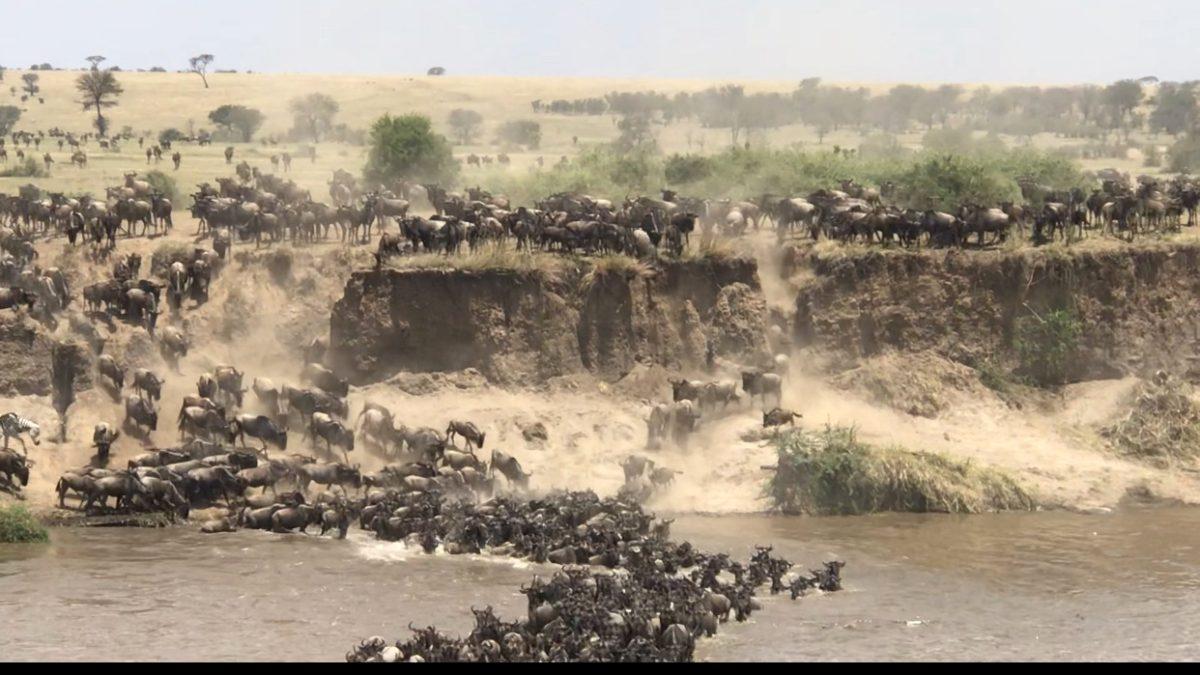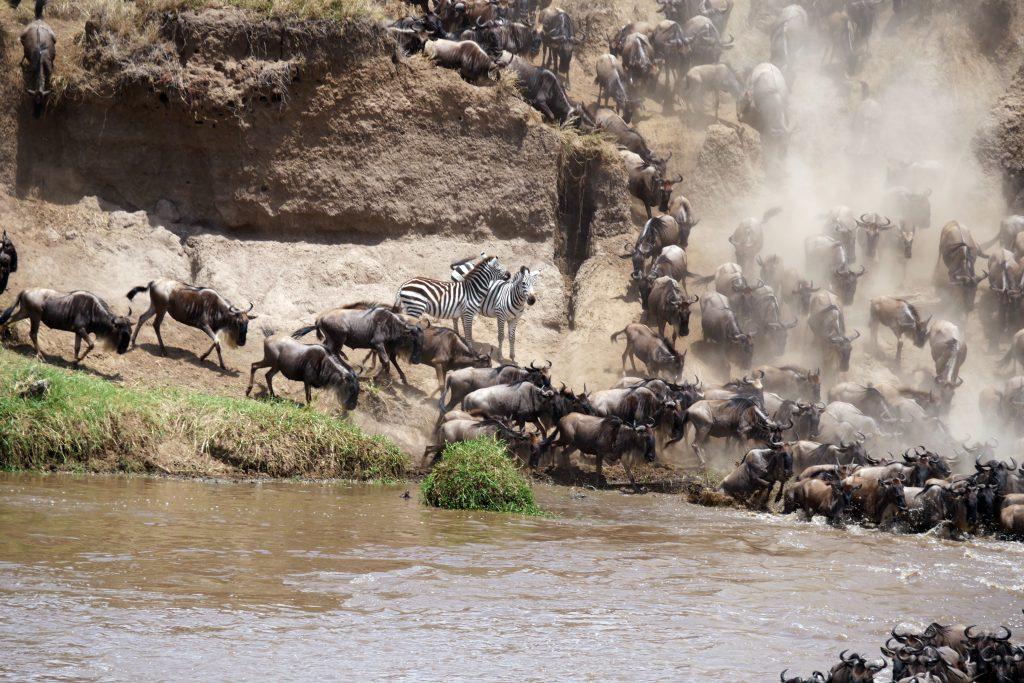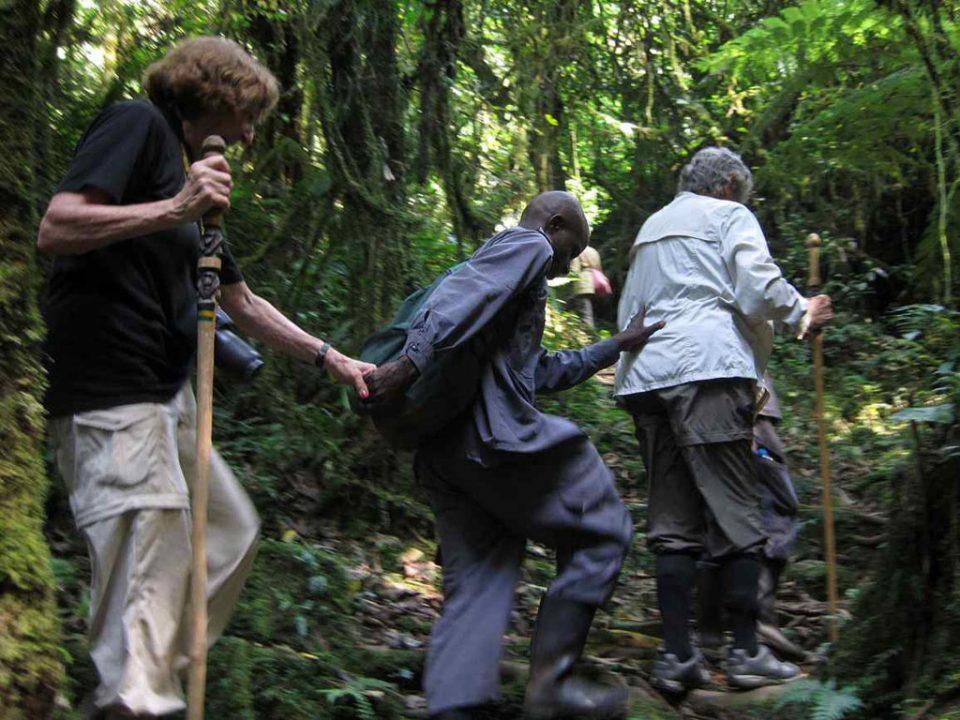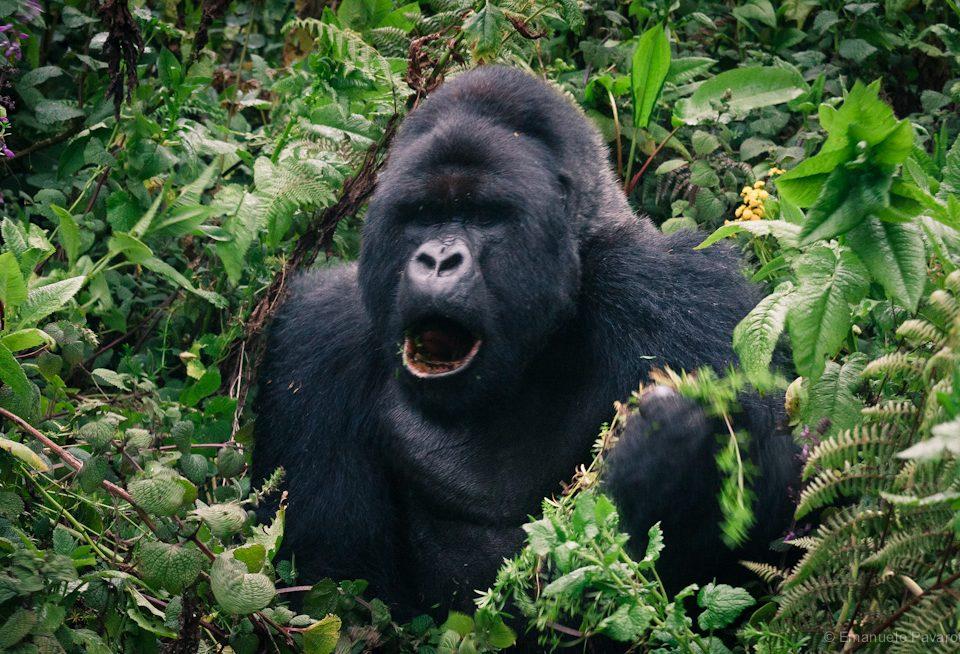
The largest mammal migration on earth is the immense Great wildebeest migration which is 800 kilometer trek. The timing of the migration coincides with greening of the notorious grasses on the short-grass plains during the wet season. The short-grass is safer, predators are easily spotted and it is an ideal place for calving. The wildebeest move in search for greeneer pasture. This is the western corridor and it is due to the dry plains in the south that forces the movement.
The highest rainfall is in the northern extension of the eco system but the grasses are least notorious. In the dry season the wildebeest retreat at least until the south becomes green again. It is a clockwise movement from the south, west, north and back to the south.
Every year millions of wildebeests, zebras, antelopes, gazelles, elands, and impalas move through a fairly predictable clockwise movement. This is around the Serengeti-Masai Mara ecosystem in search for better grazing and fresh water. Although their every movement depends on the rainfall patterns, this map will allow you to peek through the flux of the famous Great Wildebeest Migration.
The herds move in a clockwise direction, up from the south of the Serengeti, through the Ngorongoro Conservation Area, the Loliondo Game Controlled Area, and the Grumeti Reserve. They then leave Tanzania briefly to spend time in the Maasai Mara in Kenya, which borders Serengeti National Park to the north, before heading back south to start the journey again. Most of the migration takes place in the far larger Serengeti than in the Maasai Mara.
Rainfall drives the event, so tracking the herds is not an exact science, but the same general pattern plays out each year.
January
It first rains in the southern Serengeti plains. During this month, the areas of Ndutu and Ngorongoro Conservation areas in southern Seregenti have short grass plains making it suitable for the herds to stay there. Many females in the herd are heavily pregnant at this point and moving towards greener grasses is of top priority. Calving season begins at the end of this month. Approximately 8,000 wildebeests are born on a daily basis during this season. Adult Wildebeests protect their young ones from predators since there are thousand feeble calves.
February
Calving season continues in this month. This season has lots of action and wonders. The abundant new grass makes the area around Lake Maek and Lake Ndutu the ideal place for the wildebeest to give birth. Mothers of wildebeests make some sort of barricade around their young ones to protect them from predators. Calves take off just minutes after birth and littles cubs trained how to kill by their elders.
March
In this month, the herds are dispersed across the southern region of the Serengeti area. The last batch of the calves are born and the herds feed on leftover grass as they start gathering for their journey to the north..
April
During this month, the wildebeest herd move to the northern side in search for greener pasture and water. Others leave early and are in either the central or western regions of Serengeti. The herds amble from the Ndutu region, past the Simba kopje, in the direction of Moru. The herds have now split into large groups, rather than the massive concentrations that stretch as far as the horizon. Simba kopje is where the lions are at, and it’s worth spending some time lion hunting.
May
The central and western Serengeti is filled with a huge number of herds. The ‘long rains’ keep on going throughout the month. And as the calves get bigger and stronger, the distances the herd covers get longer.
Many Zebras, Thomson’s and Grant gazelles join the huge number of wildebeest in the areas surrounding Moru Kopjes and western Seronera.
June
By June the rains have abated somewhat, and the herds have spread out. The front-runners reach Mbalageti River around this time. While those bringing up the rear could still be as far back as Lake Magadi or in the southernmost corner of the Simiti and Nyamuma Hills. The herds are now often in long lines as they head north. Here the pace of migration reduces as the herds get close to the southern side of Grumeti River. The heard will gather on the bank of their and stay there for 2 weeks before crossing. They will face the first obstacle crossing the Grumeti River. Many animals don’t survive the crossing as they are awaited for by the area’s population of oversized crocodiles ready to kill.
July
Most herds disperse around Grumeti Reserve and Ikorongo and a few in the center of Serengeti National Park, migration continues.It is during the end of this month, when the incredible drama of the Mara River crossing takes place. This experience is known as the World Cup of Wildlife. As migrant animals struggle for survival, Huge Nile crocodiles and mighty hippos await in the brown waters of the river. July is mating season in the Serengeti. You can find the herds in the Grumeti Reserve, in the west of the Serengeti, and moving past Fort Ikoma. Crossings of the Grumeti River are worth hanging around for, but the Serengeti is vast and relatively under-developed with lodges, and so river crossings are harder to find.
Also, the Grumeti River does not have the volume of water that the Mara River has, and the crossings are not as spectacular. The herds graze their way northward, as they move toward the Maasai Mara in Kenya. This is a transborder event.
August
This month is also action packed as migration continues. Millions of wildebeests joined by thousands of zebras, gazelles and kudus rush through the river and into the adjacent Masai Mara Game Reserve in Kenya. Sometimes the herds plunge en masse off steep banks in their desperate attempts to get across the river, or after being spooked by lions, and the fall alone will kill many individuals. Others drown and are crashed by the sheer volume of panicking wildebeest trying to scramble up the equally steep banks on the other side. Every death means dinner for crocodiles, birds and fish – such is nature’s bounty.

September
Depending on the rains, the movement of the migration extends and river crossing happens in August until the first weeks of September. Those who survive will feast on the lush grasses in the Masai Mara in Kenya.
October
Many animals like huge herds of wildebeests, zebras, antelopes are seen in Masai Mara Game reserve during this month. Some just stay in Mara for a few days and move back to the south for the fresh grass.
November
During this month, the rain begins. The herds will start moving back to the South leaving Masai Mara. They always pass through western Loliondo as well as Serengeti’s Lobo area. By this time Serengenti has fertile plains.
December
The Herds disperse around the northern and southern regions of Serengeti. They stay and feed on the fresh grasses as the calving season comes up and the cycle begins again.
Facts about the great migration
- The Great Migration sees over 1.5 million wildebeest, 200,000 zebra and a host of other antelope travelling cross country.
- Between January and March, half a million wildebeest are born each year in the Serengeti. In February, the month with the highest calving rate, around 8,000 wildebeest are born each day.
- The Great Migration is the largest overland migration in the world. The animals travel a total of 800km or more during each cycle.
- The migration is a chaotic frenzy of movement. Research shows that a herd of wildebeest first possess ‘swarm intelligence’, where the wildebeest systematically explore and overcome an obstacle as one.
- The reason why zebra and wildebeest graze in harmony together is because they each eat different parts of the same type of grass.
- Because wildebeest have no natural leader, the migrating herd often splits up into smaller herds that circle the main, mega-herd, going in different directions. When considering these smaller, split herds the whole migration can cover over half of the whole Serengeti.
- The Serengeti National Park eco-system is the oldest on the planet. It boasts a diversity of plants and animals that is unavailable anywhere else on the globe.
- During the migration around 250,000 wildebeest and 30,000 zebra are killed off every year as a result of predation by carnivores, but also from thirst, hunger, and exhaustion.
- The crocodiles awaiting the herds in the Mara River drown their prey by clutching them in their strong jaws and pulling them below the water, twisting them to break off bite-size pieces. A crocodile can lunge more than half of its body length out of the water to grab a potential victim and can also use its tail as a secondary weapon.
- There are more than 3,000 lions currently living in the Serengeti ecosystem that follow the migratory herds across the reserve.



